All Exams >
Grade 3 >
Science for Grade 3 >
All Questions
All questions of Adaptations and Variations for Grade 3 Exam
Plants in hilly areas have to bear high speed winds and cold. Which of the following adaptations best helps them face the above conditions?- a)Having lots of branches and leaves
- b)Tall and straight trunk with needle like leaves
- c)Leaves which are modified into spines
- d)Breathing roots which come above the ground
Correct answer is option 'B'. Can you explain this answer?
Plants in hilly areas have to bear high speed winds and cold. Which of the following adaptations best helps them face the above conditions?
a)
Having lots of branches and leaves
b)
Tall and straight trunk with needle like leaves
c)
Leaves which are modified into spines
d)
Breathing roots which come above the ground
|
|
Sudhir Mehta answered |
The trees that grow in hilly areas have needle like leaves, which are very tough and can survive in the cold, snow and wind.
Ramu brought a plant with thick branches and leaves from the plains and planted it in a marshy area. What must the new plant do to survive in its new environment?- a)It must change its colour in its new environment.
- b)It must change its leaves into spines to reduce the loss of water.
- c)It must start trapping insects and eat them.
- d)It must develop breathing roots to get more air.
Correct answer is option 'D'. Can you explain this answer?
Ramu brought a plant with thick branches and leaves from the plains and planted it in a marshy area. What must the new plant do to survive in its new environment?
a)
It must change its colour in its new environment.
b)
It must change its leaves into spines to reduce the loss of water.
c)
It must start trapping insects and eat them.
d)
It must develop breathing roots to get more air.
|
|
Sudhir Mehta answered |
In marshy areas, soil does not contain air. To adjust to marshy conditions, the plant should develop breathing roots.
Plants give out water through the pores present on the lower side of their leaves. Plants living in deserts need to reduce the loss of water because water is very scarce in deserts. Which of the following is an adaptation developed by the desert plants to manage the above situation?
- a)They have lots of branches and leaves.
- b)They do not shed leaves in the summer.
- c)They develop roots which come above the ground.
- d)Their leaves are modified into spines.
Correct answer is option 'D'. Can you explain this answer?
Plants give out water through the pores present on the lower side of their leaves. Plants living in deserts need to reduce the loss of water because water is very scarce in deserts. Which of the following is an adaptation developed by the desert plants to manage the above situation?
a)
They have lots of branches and leaves.
b)
They do not shed leaves in the summer.
c)
They develop roots which come above the ground.
d)
Their leaves are modified into spines.
|
|
Sudhir Mehta answered |
Desert plants have adapted to their environment to minimize water loss. One common adaptation is the modification of leaves into spines. This reduces the surface area through which water can be lost, significantly decreasing transpiration.
Therefore, the correct adaptation developed by desert plants to manage water loss is: Their leaves are modified into spines.
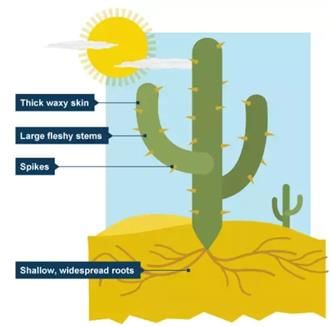

Which characteristic is typical of evergreen trees?- a)Keeping their leaves all year round
- b)Changing leaf color every season
- c)Growing only in tropical regions
- d)Shedding all leaves in winter
Correct answer is option 'A'. Can you explain this answer?
Which characteristic is typical of evergreen trees?
a)
Keeping their leaves all year round
b)
Changing leaf color every season
c)
Growing only in tropical regions
d)
Shedding all leaves in winter

|
Nclex Coaching Centre answered |
Evergreen trees retain their leaves throughout the year, allowing them to photosynthesize continuously. This is in contrast to deciduous trees, which shed their leaves annually to conserve energy during unfavorable seasons.
The plants that are most useful to man are- a)hilly plants.
- b)underwater plants.
- c)desert plants.
- d)plants of the grass family.
Correct answer is option 'D'. Can you explain this answer?
The plants that are most useful to man are
a)
hilly plants.
b)
underwater plants.
c)
desert plants.
d)
plants of the grass family.
|
|
Sudhir Mehta answered |
Plants of the grass family provide us with cereals, hence they are most useful to us.
Trees that do not lose their leaves in winter are called _____. - a) Deciduous
- b) Evergreen
- c) Coniferous
- d) Seasonal
Correct answer is option 'B'. Can you explain this answer?
Trees that do not lose their leaves in winter are called _____.
a)
Deciduous
b)
Evergreen
c)
Coniferous
d)
Seasonal

|
Kds Coaching answered |
Evergreen trees keep their leaves all year long. This helps them stay green and healthy, even when the weather changes.
Which of the following plants does not need soil to grow?- a)Cactus
- b)Fern
- c)Water hyacinth
- d)Pitcher plant
Correct answer is option 'C'. Can you explain this answer?
Which of the following plants does not need soil to grow?
a)
Cactus
b)
Fern
c)
Water hyacinth
d)
Pitcher plant
|
|
Sudhir Mehta answered |
Water hyacinth is an aquatic plant.
Mangroves develop aerial roots. This is an adaptation to the- a)amount of water available
- b)temperature
- c)type of soil
- d)amount of rain
Correct answer is option 'A'. Can you explain this answer?
Mangroves develop aerial roots. This is an adaptation to the
a)
amount of water available
b)
temperature
c)
type of soil
d)
amount of rain
|
|
Riya Singh answered |
- Mangroves grow in marshy areas. Marshy soil have clay soil with plenty of water and has no air.
- The water cannot drain away and remains in the soil.
- Hence the plants in the soil develop breathing roots that help the roots to breathe.
Check out the image of Mangroves below:
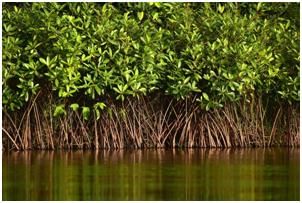
Shreya plucked a lotus plant from a pond near her house. She observed that it has a long hollow stem. Can you explain the function of the stem?
- a)To help leaves float on water
- b)To absorb soil
- c)To fix the plant to the bottom of the pond
- d)To make the flower beautiful
Correct answer is option 'A'. Can you explain this answer?
Shreya plucked a lotus plant from a pond near her house. She observed that it has a long hollow stem. Can you explain the function of the stem?
a)
To help leaves float on water
b)
To absorb soil
c)
To fix the plant to the bottom of the pond
d)
To make the flower beautiful
|
|
Sudhir Mehta answered |
The stems in lotus plants are hollow and very light. This helps the leaves to float on water.
What helps fixed aquatic plants like water lilies stay afloat?- a)Long, deep roots
- b)Thick, woody stems
- c)Broad, waxy leaves
- d)Spiny leaves
Correct answer is option 'C'. Can you explain this answer?
a)
Long, deep roots
b)
Thick, woody stems
c)
Broad, waxy leaves
d)
Spiny leaves
|
|
Glitz Classes answered |
Fixed aquatic plants, like water lilies, have broad leaves with a waxy surface that helps them float on the water. The waxy coating keeps the leaves dry and prevents them from rotting.
What does a habitat provide for an organism?- a)Predators to challenge survival
- b)Unfavorable living conditions
- c)Everything it needs to survive
- d)Limited space for growth
Correct answer is option 'C'. Can you explain this answer?
a)
Predators to challenge survival
b)
Unfavorable living conditions
c)
Everything it needs to survive
d)
Limited space for growth

|
Nclex Coaching Centre answered |
A habitat provides everything an organism needs to survive, including food, water, shelter, and appropriate living conditions. For plants, this means having the necessary resources to grow and reproduce, even in varied and extreme environments like deserts, mountains, and underwater regions. Adaptations help plants thrive in these diverse habitats.
In cactus plants, photosynthesis occurs in- a)leaves.
- b)spines.
- c)roots.
- d)stems.
Correct answer is option 'D'. Can you explain this answer?
In cactus plants, photosynthesis occurs in
a)
leaves.
b)
spines.
c)
roots.
d)
stems.
|
|
Sudhir Mehta answered |
In cactus plants, photosynthesis occurs in its thick and fleshy stems.
Which of the following is an example of plant adaptation?- a)Growing faster
- b)Changing leaf color in the fall
- c)Using thorns to scare off animals
- d)Releasing fragrance during the day
Correct answer is option 'C'. Can you explain this answer?
a)
Growing faster
b)
Changing leaf color in the fall
c)
Using thorns to scare off animals
d)
Releasing fragrance during the day

|
Nclex Coaching Centre answered |
Roses use thorns to scare off animals that might eat them, which is a form of adaptation. This physical feature helps the plant protect itself from being consumed by herbivores, ensuring its survival and ability to reproduce.
Which of the following statements is FALSE regarding hilly trees like the Pine?- a)They do not have flowers.
- b)They are dome shaped.
- c)They are conifers.
- d)Their leaves are needle-shaped.
Correct answer is option 'B'. Can you explain this answer?
Which of the following statements is FALSE regarding hilly trees like the Pine?
a)
They do not have flowers.
b)
They are dome shaped.
c)
They are conifers.
d)
Their leaves are needle-shaped.
|
|
Jyoti Gupta answered |
Understanding Hilly Trees like Pine
Hilly trees, particularly pines, are fascinating plants that exhibit unique characteristics. Let's analyze the statements provided to identify which one is false.
Statement Analysis
- a) They do not have flowers.
- This statement is true. Pines are gymnosperms, meaning they reproduce using cones instead of flowers.
- b) They are dome shaped.
- This statement is false. While some trees may have a dome shape, pines typically have a more conical or pyramidal shape, especially when they are young. Their branches extend outward and upward, creating a distinctive silhouette that is not dome-like.
- c) They are conifers.
- This statement is true. Pines belong to the conifer family, which means they bear cones and have needle-like leaves.
- d) Their leaves are needle-shaped.
- This statement is also true. Pine trees have long, slender leaves that resemble needles, which help reduce water loss and withstand cold climates.
Conclusion
In summary, the false statement among the options is that hilly trees like pines are dome-shaped. Instead, they have a conical shape, making them easily recognizable in forests and hilly areas. Understanding these characteristics helps us appreciate the adaptability and beauty of pine trees in their natural habitats.
Hilly trees, particularly pines, are fascinating plants that exhibit unique characteristics. Let's analyze the statements provided to identify which one is false.
Statement Analysis
- a) They do not have flowers.
- This statement is true. Pines are gymnosperms, meaning they reproduce using cones instead of flowers.
- b) They are dome shaped.
- This statement is false. While some trees may have a dome shape, pines typically have a more conical or pyramidal shape, especially when they are young. Their branches extend outward and upward, creating a distinctive silhouette that is not dome-like.
- c) They are conifers.
- This statement is true. Pines belong to the conifer family, which means they bear cones and have needle-like leaves.
- d) Their leaves are needle-shaped.
- This statement is also true. Pine trees have long, slender leaves that resemble needles, which help reduce water loss and withstand cold climates.
Conclusion
In summary, the false statement among the options is that hilly trees like pines are dome-shaped. Instead, they have a conical shape, making them easily recognizable in forests and hilly areas. Understanding these characteristics helps us appreciate the adaptability and beauty of pine trees in their natural habitats.
Which characteristic allows Hydrilla leaves to survive underwater?- a)Broad and flat leaves
- b)Thick and fleshy leaves
- c)Thin, narrow leaves
- d)Spiny and sharp leaves
Correct answer is option 'C'. Can you explain this answer?
a)
Broad and flat leaves
b)
Thick and fleshy leaves
c)
Thin, narrow leaves
d)
Spiny and sharp leaves
|
|
Nisha Desai answered |
Adaptation of Hydrilla Leaves
Hydrilla is a submerged aquatic plant that has specialized adaptations that allow it to thrive underwater. One of the most important characteristics of Hydrilla leaves is their thin and narrow shape.
Reason for Thin, Narrow Leaves
- Hydrodynamic Shape: The thin and narrow leaves reduce resistance as the water flows around them. This shape helps prevent damage from currents and allows the plant to stay anchored to the substrate.
- Efficient Light Capture: Being narrow enables Hydrilla to capture sunlight effectively, even in deeper waters. It allows the plant to maximize light absorption, which is crucial for photosynthesis.
- Gas Exchange: The thin structure facilitates easier gas exchange through the leaf surface, allowing the plant to take in carbon dioxide and release oxygen, even underwater.
Comparison with Other Leaf Types
- Broad and Flat Leaves: While they can capture more light, they may not be as efficient underwater due to increased drag.
- Thick and Fleshy Leaves: These are generally heavier and may not be well-suited for underwater life where buoyancy is essential.
- Spiny and Sharp Leaves: These adaptations are more defensive and do not contribute to the efficiency of underwater survival.
Conclusion
In summary, the thin and narrow leaves of Hydrilla are perfectly adapted for life underwater, allowing the plant to thrive in its aquatic environment. This unique shape provides advantages in terms of light absorption, gas exchange, and reduced water resistance, making it a successful aquatic plant.
Hydrilla is a submerged aquatic plant that has specialized adaptations that allow it to thrive underwater. One of the most important characteristics of Hydrilla leaves is their thin and narrow shape.
Reason for Thin, Narrow Leaves
- Hydrodynamic Shape: The thin and narrow leaves reduce resistance as the water flows around them. This shape helps prevent damage from currents and allows the plant to stay anchored to the substrate.
- Efficient Light Capture: Being narrow enables Hydrilla to capture sunlight effectively, even in deeper waters. It allows the plant to maximize light absorption, which is crucial for photosynthesis.
- Gas Exchange: The thin structure facilitates easier gas exchange through the leaf surface, allowing the plant to take in carbon dioxide and release oxygen, even underwater.
Comparison with Other Leaf Types
- Broad and Flat Leaves: While they can capture more light, they may not be as efficient underwater due to increased drag.
- Thick and Fleshy Leaves: These are generally heavier and may not be well-suited for underwater life where buoyancy is essential.
- Spiny and Sharp Leaves: These adaptations are more defensive and do not contribute to the efficiency of underwater survival.
Conclusion
In summary, the thin and narrow leaves of Hydrilla are perfectly adapted for life underwater, allowing the plant to thrive in its aquatic environment. This unique shape provides advantages in terms of light absorption, gas exchange, and reduced water resistance, making it a successful aquatic plant.
Why do floating plants like duckweed have spongy leaves with air spaces?- a)To attract bees
- b)To store food
- c)To help them float
- d)To scare animals away
Correct answer is option 'C'. Can you explain this answer?
a)
To attract bees
b)
To store food
c)
To help them float
d)
To scare animals away

|
Nclex Coaching Centre answered |
Floating plants like duckweed have spongy leaves filled with air spaces, which help them float on the water. This makes it easier for the plant to get sunlight and stay stable on the water surface.
Which type of tree loses all its leaves in autumn to survive the winter?- a)Evergreen tree
- b)Deciduous tree
- c)Cactus tree
- d)Palm tree
Correct answer is option 'B'. Can you explain this answer?
Which type of tree loses all its leaves in autumn to survive the winter?
a)
Evergreen tree
b)
Deciduous tree
c)
Cactus tree
d)
Palm tree

|
Kds Coaching answered |

- A deciduous tree is a type of tree that loses all its leaves at once in autumn.
- This helps the tree survive the cold winter by saving water.
- In spring, new leaves grow back.
- Examples of deciduous trees include cherry and maple.
- On the other hand, evergreen trees keep their leaves all year round and do not lose them in autumn.
How do underwater plants help fish and other aquatic animals?- a)By giving shade
- b)By making food for them
- c)By releasing oxygen into the water
- d)By growing flowers
Correct answer is option 'C'. Can you explain this answer?
How do underwater plants help fish and other aquatic animals?
a)
By giving shade
b)
By making food for them
c)
By releasing oxygen into the water
d)
By growing flowers
|
|
Riya Singh answered |
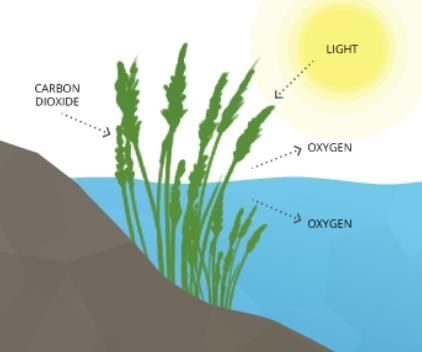
Underwater plants release oxygen into the water during photosynthesis. This oxygen is important for fish and other aquatic animals to breathe and live, helping to keep the water healthy.
Why do fixed aquatic plants have stomata on the upper side of their leaves?- a)To look pretty
- b)To save water
- c)To take in air
- d)To stay cool
Correct answer is option 'C'. Can you explain this answer?
a)
To look pretty
b)
To save water
c)
To take in air
d)
To stay cool
|
|
Riya Singh answered |
Fixed aquatic plants, such as water lilies, have stomata on the upper side of their leaves to take in air. This is important because their leaves float on the water, so having stomata on top allows them to get the carbon dioxide they need for photosynthesis.
What are plants that grow in water called?- a)Desert plants
- b)Mountain plants
- c)Aquatic plants
- d)Forest plants
Correct answer is option 'C'. Can you explain this answer?
What are plants that grow in water called?
a)
Desert plants
b)
Mountain plants
c)
Aquatic plants
d)
Forest plants

|
Kds Coaching answered |
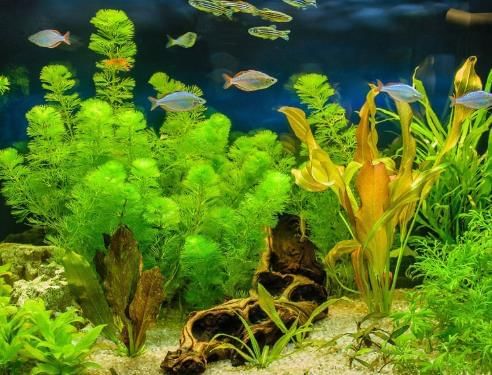
Plants that grow in water are called aquatic plants. They live in water environments like lakes, ponds, rivers, and oceans.
How do underwater plants like Hydrilla survive underwater? 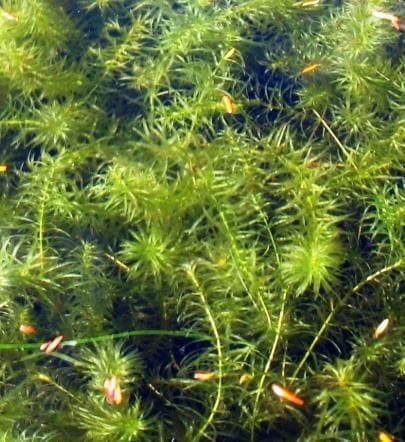
- a)By having thick, hard leaves
- b)By having broad leaves with a waxy surface
- c)By having thin, narrow leaves
- d)By growing above the water
Correct answer is option 'C'. Can you explain this answer?
How do underwater plants like Hydrilla survive underwater?

a)
By having thick, hard leaves
b)
By having broad leaves with a waxy surface
c)
By having thin, narrow leaves
d)
By growing above the water

|
Dr Manju Sen answered |
Underwater plants like Hydrilla have thin, narrow leaves that let water pass through them easily. This helps the plants stay in place and not get torn by water movement.
Chapter doubts & questions for Adaptations and Variations - Science for Grade 3 2025 is part of Grade 3 exam preparation. The chapters have been prepared according to the Grade 3 exam syllabus. The Chapter doubts & questions, notes, tests & MCQs are made for Grade 3 2025 Exam. Find important definitions, questions, notes, meanings, examples, exercises, MCQs and online tests here.
Chapter doubts & questions of Adaptations and Variations - Science for Grade 3 in English & Hindi are available as part of Grade 3 exam.
Download more important topics, notes, lectures and mock test series for Grade 3 Exam by signing up for free.
Science for Grade 3
38 videos|91 docs|25 tests
|

Contact Support
Our team is online on weekdays between 10 AM - 7 PM
Typical reply within 3 hours
|
Free Exam Preparation
at your Fingertips!
Access Free Study Material - Test Series, Structured Courses, Free Videos & Study Notes and Prepare for Your Exam With Ease

 Join the 10M+ students on EduRev
Join the 10M+ students on EduRev
|

|
Create your account for free
OR
Forgot Password
OR
Signup to see your scores
go up
within 7 days!
within 7 days!
Takes less than 10 seconds to signup









